Revealed: the staggering cost of extreme weather and the countries hit hardest
The devastating financial toll of a warming world, revealed

The climate emergency is not just an environmental catastrophe; it's become a full-blown economic disaster too. A bombshell report commissioned by the International Chamber of Commerce (ICC) has laid bare the staggering monetary hit over the past decade of nearly 4,000 extreme weather events.
With wildfires devastating Los Angeles and estimates suggesting they could result in losses of at least $135 billion (£111bn), read on to discover the shocking costs for each year of the past decade and find out which 10 countries have been hit with the biggest bills.
All dollar amounts in US dollars.
The true cost of climate change is likely much higher

The report is the handiwork of economics and finance consultancy Oxera, which analysed almost 4,000 extreme weather events affecting 1.6 billion people across six continents between 2014 and 2023. Oxera's estimates are based on the costs associated with infrastructure damage and destruction. As far as you can put a price on a person's life, it's also based on the 'human capital' losses from premature deaths.
Oxera drew from a range of trusted sources to compile its report. These include EM-DAT, the international disaster database which holds data for over 26,000 mass disasters from 1900 to the present day. To provide a more accurate comparison, Oxera has adjusted the figures to reflect 2023 values.
The report doesn't factor in the indirect financial impacts of climate change, such as mass migration and agricultural disruption, so the true cost is likely to be even more astronomical. With that in mind, we begin by looking at the estimated financial impact for each year from 2014 to 2023.
2014 – what happened?

Around 7,000 people died as a consequence of climate change-driven extreme weather events in 2014. China endured the highest number of events at 32, followed by the US with 17. Peru suffered the deadliest weather calamity, a winter cold wave that killed 505 people. However, it's worth noting this event may not have been linked to climate change.
Afghanistan recorded the next largest death toll of the year for a weather-related disaster following a flash flood in April that claimed 431 lives. In terms of the number of people affected, a summer drought in China was the most significant event, impacting a staggering 27.5 million individuals.
2014 extreme weather cost: $118.7 billion (£93.1bn)

The cost of the physical damage for the year was $116.7 billion (£92bn), while the economic loss attributed to early deaths was $1.9 billion (£1.5bn), giving a total of $118.7 billion (£93.1bn).
Based purely on the impact on infrastructure, India suffered the most. A flood in India's Jammu and Kashmir region in September was the costliest natural disaster of the year, incurring damage worth $20.6 billion (£16.2bn) when adjusted for inflation. Cyclone Hudhud, which hit the country the following month, was the second most expensive, coming in at $9 billion (£7.1bn).
2015 – what happened?

Extreme weather was responsible for about 12,000 deaths in 2015. The most lethal event was a June heatwave that scorched France, sending temperatures in Paris soaring to 39.7°C (103.4°F). A total of 3,275 people perished in the heat.
A heatwave in India the month before claimed the second-highest death toll at 2,248. Again, China experienced the most extreme weather with 31 events, followed by the US with 28. The most wide-reaching event was a summer drought in North Korea that affected 18 million people.
2015 extreme weather cost: $109.8 billion (£86.5bn)
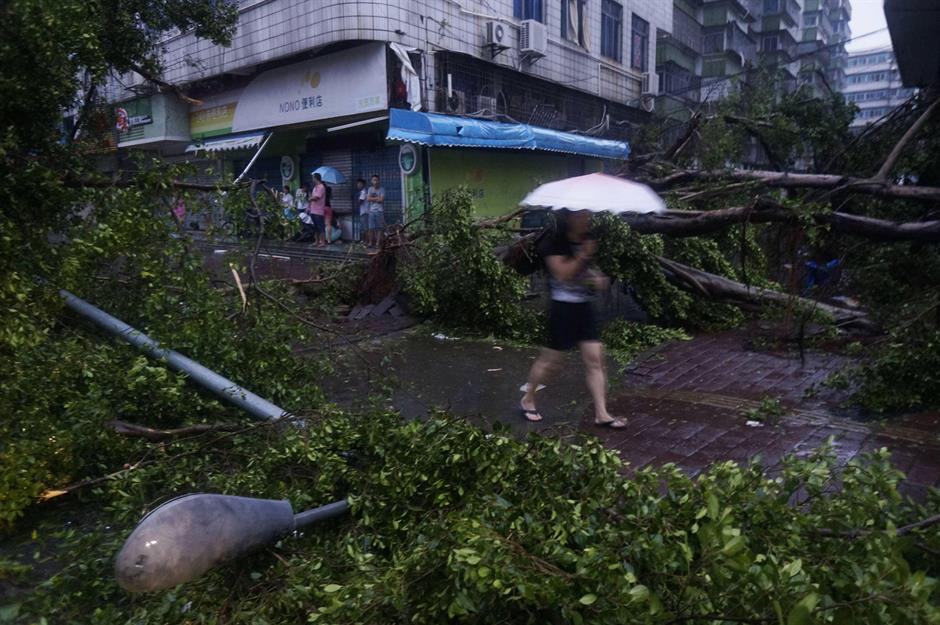
The number of deaths associated with extreme weather in 2015 was higher than the previous year, but the overall cost as estimated by Oxera was lower – the lowest in the decade in fact, at $109.8 billion (£86.5bn). The human capital impact alone was estimated at $5.5 billion (£4.3bn).
This could come down to the large number of heatwaves in 2015. While deadly, heatwaves leave little physical damage compared to other climate-related catastrophes like typhoons and floods.
The most costly extreme weather event of the year was Typhoon Mujigae, which battered China and the Philippines in October. Its financial fallout amounted to $5.5 billion (£4.3bn) in 2023 prices.
2016 – what happened?
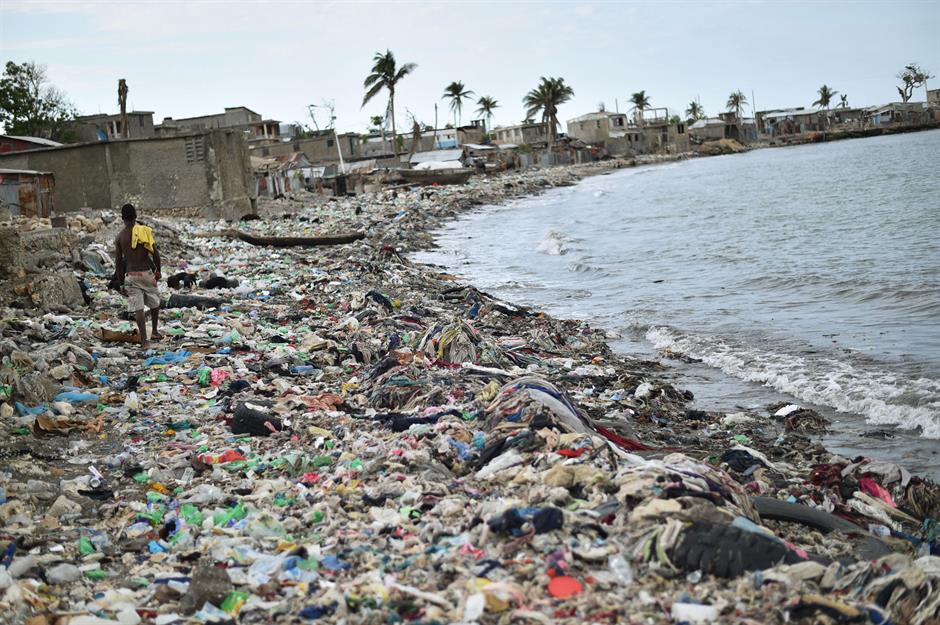
The total number of deaths caused by extreme weather dropped back to 7,000 in 2016. China experienced more climate-linked disasters than any other country at 31, followed by the US, which recorded 25.
Hurricane Matthew, which struck Haiti in October, exacted the biggest death toll, with 546 lives lost. A flood in North Korea in August killed almost as many people, while a heatwave that baked India in April led to 300 fatalities. India also experienced the most wide-reaching extreme weather event in history in 2016, a year-long drought that impacted a record 330 million people.
2016 extreme weather cost: $147.4 billion (£116.4bn)

The bill for extreme weather increased to $147.4 billion (£116bn) in 2016. Physical asset losses totalled $146 billion (£115.1bn), while the impact of the lives lost is estimated at $1.4 billion (£1.1bn).
Taking into account the economic hit, bar any losses attributed to early deaths, the flooding that affected large parts of China in June was the costliest event. It caused damage of $27.9 billion (£22bn) in 2023 money.
2017 – what happened?
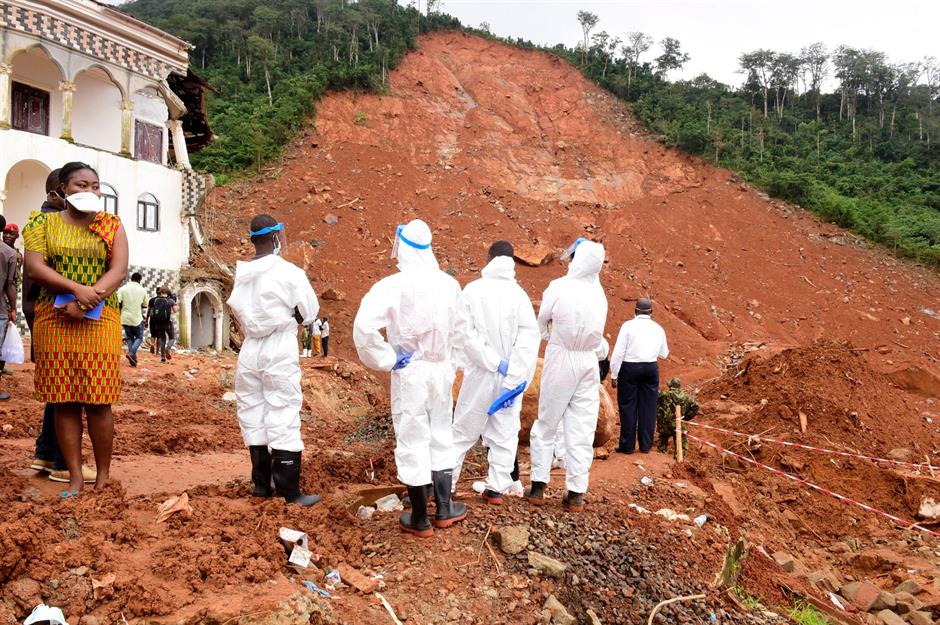
An additional 2,000 people died in 2017 as a result of extreme weather, bringing the year's death toll to 7,000. The Atlantic hurricane season was extremely active in 2017, but the deadliest event was the series of mudslides that ravaged Freetown, the capital of Sierra Leone, in August. Its fatality count stands at 1,102.
Cyclone Ockhi, which pummelled India and Sri Lanka in December, claimed the second-highest number of lives, with 911 deaths recorded. The most severe event in terms of numbers affected was flooding in India, Nepal and Bangladesh, which impacted 26.9 million people.
2017 extreme weather cost: $395.9 billion (£283.6bn)
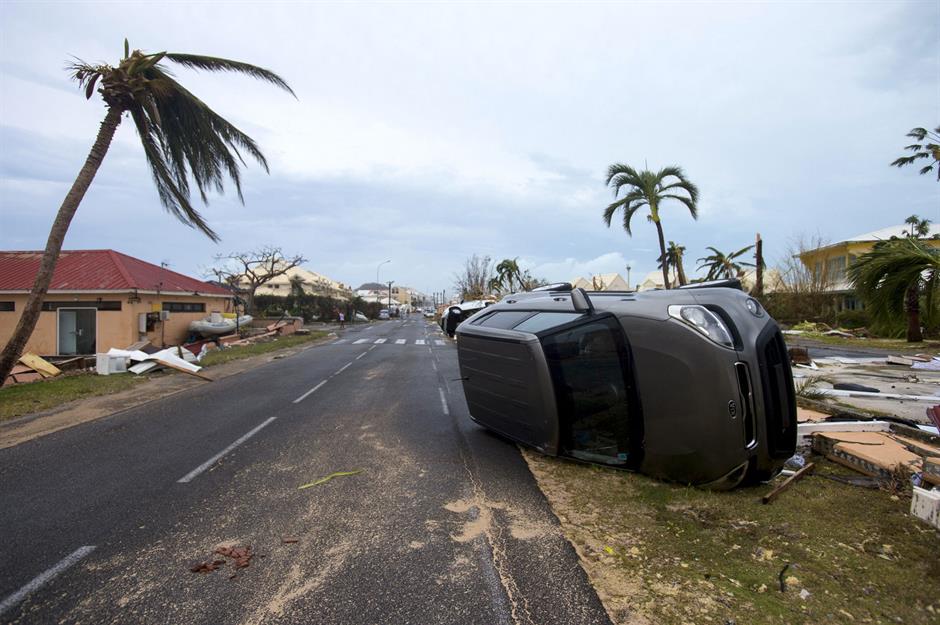
With physical asset losses of $394.1 billion (£310.7bn) and an estimated human capital impact of $1.8 billion (£1.4bn), 2017 was the costliest year for extreme weather events in the past decade.
The chief culprits were the trio of Atlantic hurricanes that battered the US and Caribbean in August and September. Together, Hurricanes Harvey, Irma and Maria caused damage amounting to $305.5 billion in 2023 prices. Harvey, which devastated Texas and Louisiana, is actually the second costliest Atlantic hurricane of all time after 2005's Hurricane Katrina, though this year's Helene could end up surpassing both...
2018 – what happened?
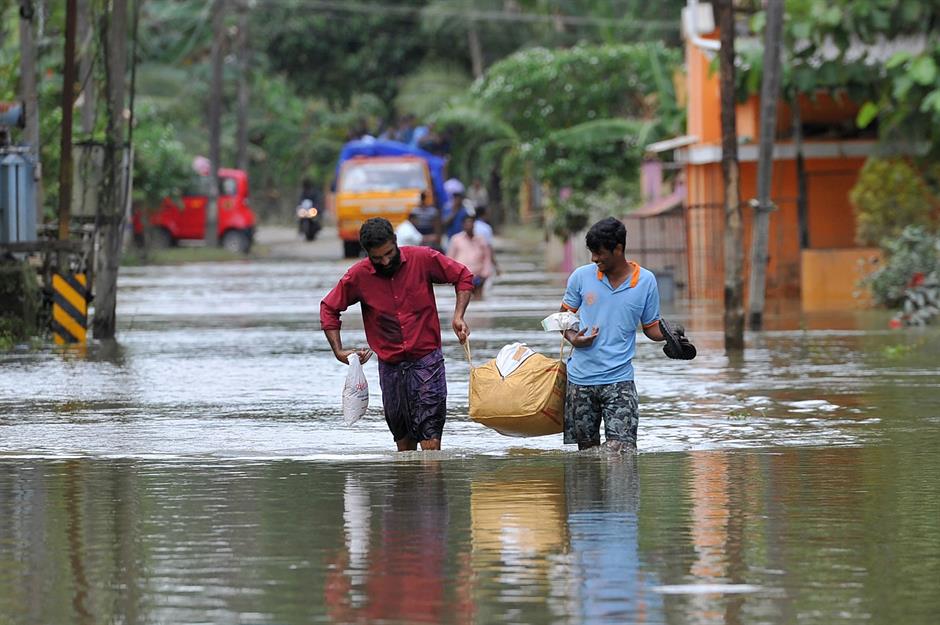
Extreme weather fatalities numbered 5,000 in 2018, the lowest figure for the decade. Flooding was the major concern, but overall, the extreme weather event count was below the average for the previous decade.
Exacerbated by climate change, August flooding in Kerala, South India triggered several landslides and was the deadliest extreme weather event of the year, claiming 504 lives. The disaster affected more people than any other weather calamity in 2018, impacting 23.2 million in the Indian state.
2018 extreme weather cost: $154.1 billion (£121.4)
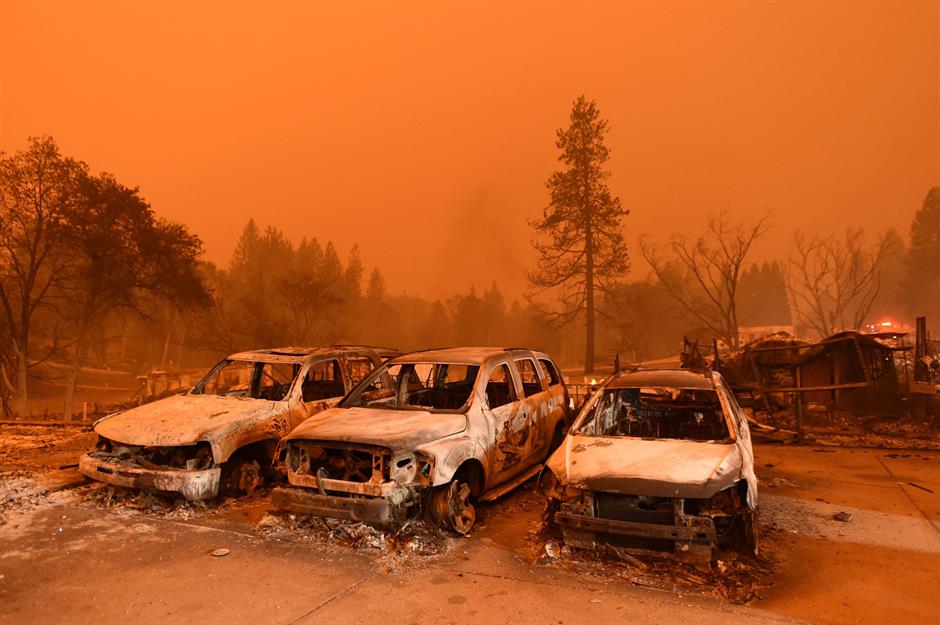
In 2018, extreme weather cost the world $152.4 billion (£120.1bn) in physical damage and $1.7 billion (£1.3bn) in lost human capital.
While the flooding in Kerala had the highest death toll, the costliest event from an infrastructure standpoint was the Camp Fire that blazed through Northern California's Butte County in November, all but destroying several communities, including the town of Paradise. The inferno killed nearly 90 people, razed almost 19,000 buildings, and caused $20 billion (£15.8bn) worth of damage in 2023 prices, making it the most expensive wildfire in US history.
2019 – what happened?
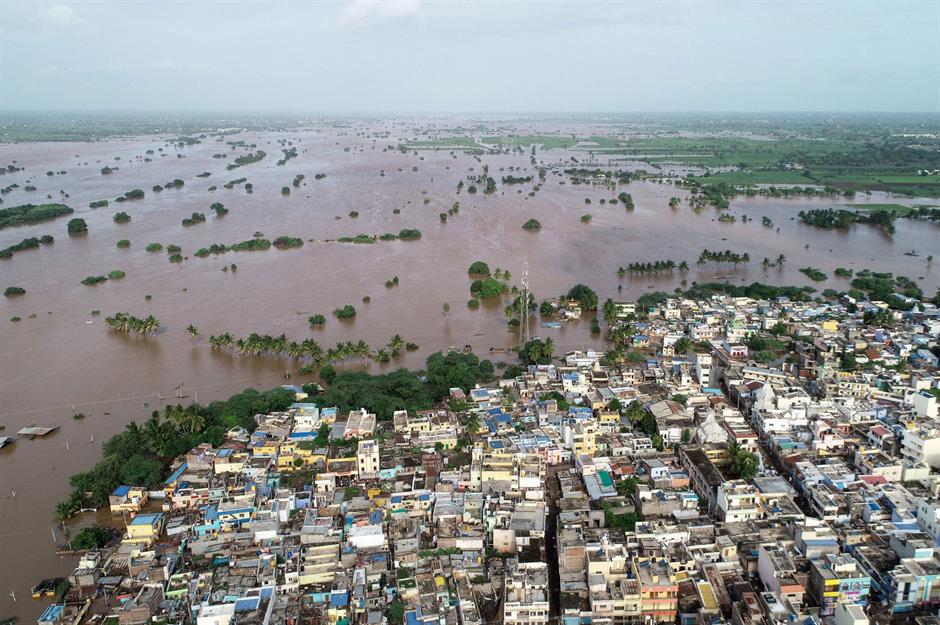
Tropical cyclones, flooding and heatwaves turbo-charged by climate change constituted the most costly severe weather events in 2019. There were around 11,000 related fatalities that year.
Flooding in India amid the heaviest monsoon rains in 25 years led to the highest death toll, with 1,900 lives lost. France recorded the second-highest number of deaths. Blistering heatwaves in June and July shattered all previous temperature records, skyrocketing to a jaw-dropping high of 45.9°C (114.6°F) in the south of the country. A total of 1,435 people died as a result.
The event that affected the highest number of people was Cyclone Fani, which impacted 20 million people in India in April.
2019 extreme weather cost: $122.4 billion (£96.6bn)
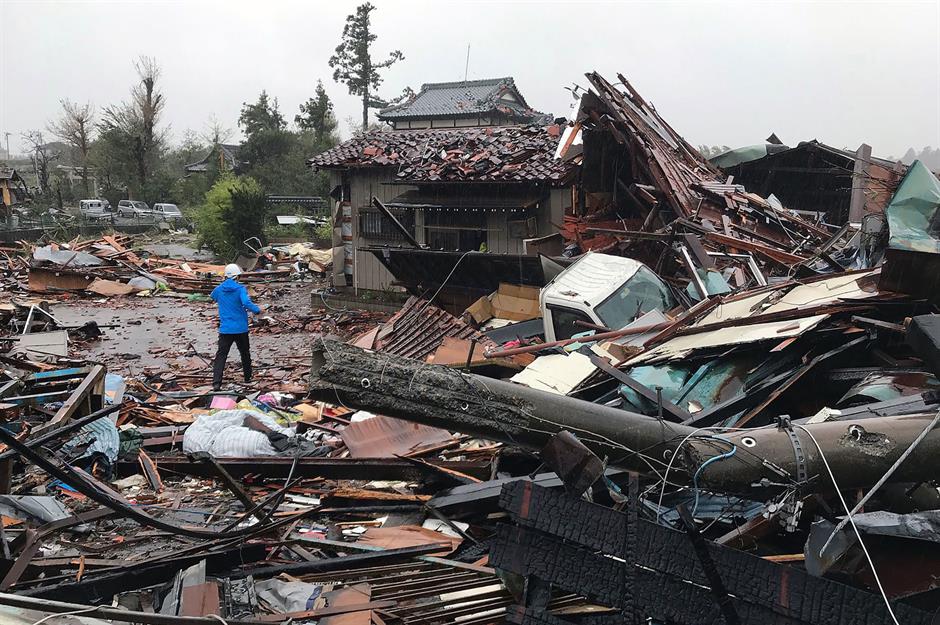
Damage to physical assets came in at $117.5 billion (£92.7bn) in 2019, while the economic loss from early deaths is estimated at $4.9 billion (£3.9bn).
In terms of infrastructure damage alone, Typhoon Hagibis was the costliest extreme weather event of the year at $20.3 billion (£16bn). It swept through Japan in October.
The next most expensive events were Typhoon Lekima, which affected China two months earlier, the Indian floods and the springtime Great Flood of 2019 in the Midwestern and Southern US, each costing $11.9 billion (£9.4bn).
2020 – what happened?

The COVID-19 pandemic claimed millions of lives in 2020, but while deaths caused by extreme weather were much fewer at 15,000, the figure was an increase on the 11,000 recorded in 2019.
Heatwaves in Western Europe led to the most fatalities. The UK, which sweltered in temperatures of up to 36.4°C in August, recorded 2,556 deaths. The heat also killed 1,924 people in France and 1,460 in Belgium.
Cyclone Amphan was the most wide-reaching extreme weather event, impacting 18 million people in India in May.
2020 extreme weather cost: $195.6 billion (£154.5bn)
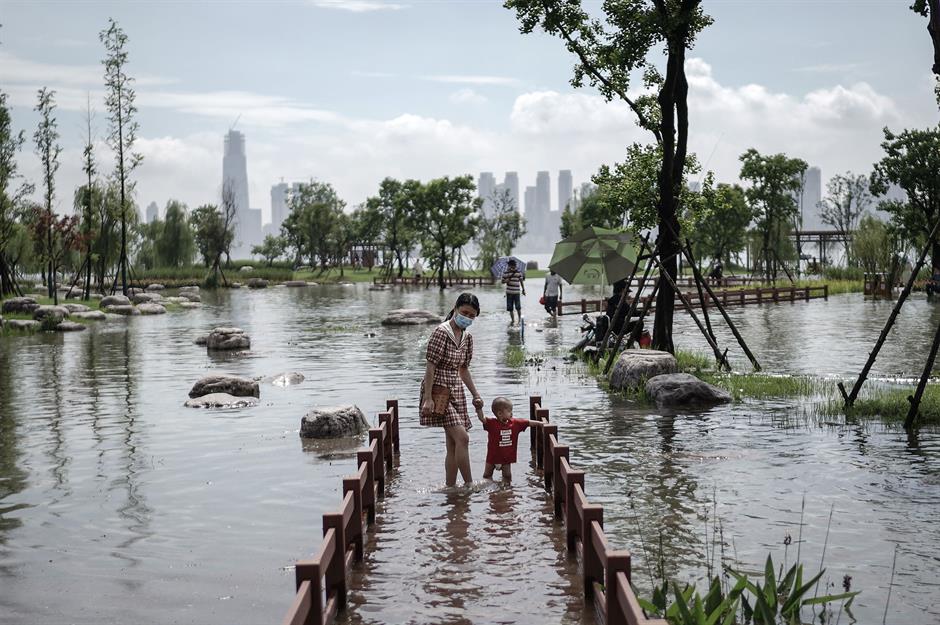
In 2020, the cost of the lives lost to extreme weather rose to $8.7 billion (£6.9bn), while infrastructure damage totalled $186.8 billion (£147.6bn).
Based on physical damage alone, China experienced the costliest event, an “unrelenting season of flooding”, according to NASA, that cost $20 billion (£15.8bn) in 2023 money. Cyclone Amphan inflicted damage of $15.3 billion (£12.1bn), while wildfires in the US exacted $13 billion (£10.3bn) worth.
2021 – what happened?
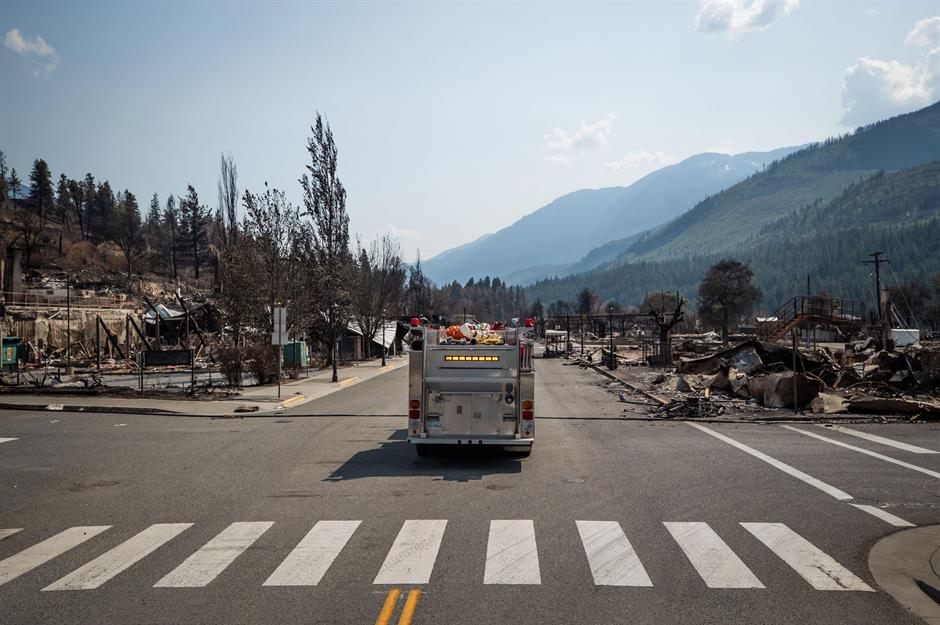
Deaths from extreme weather dropped to 8,000 in 2021. Flooding was the most prevalent event, followed by storms and wildfires.
Flooding in India killed the most people, with a total death toll of 1,282. The unprecedented heatwave that broiled Western North America in June and July was the second most deadly event. It claimed 229 lives in the US and 815 in Canada, where the temperature shot up to a record-smashing 49.6 °C (121.3 °F). The country's highest-ever temperature was recorded on 30 June in Lytton, British Columbia. The following day, the town was reduced to ashes by a catastrophic wildfire.
2021 extreme weather cost: $279.4 billion (£221bn)
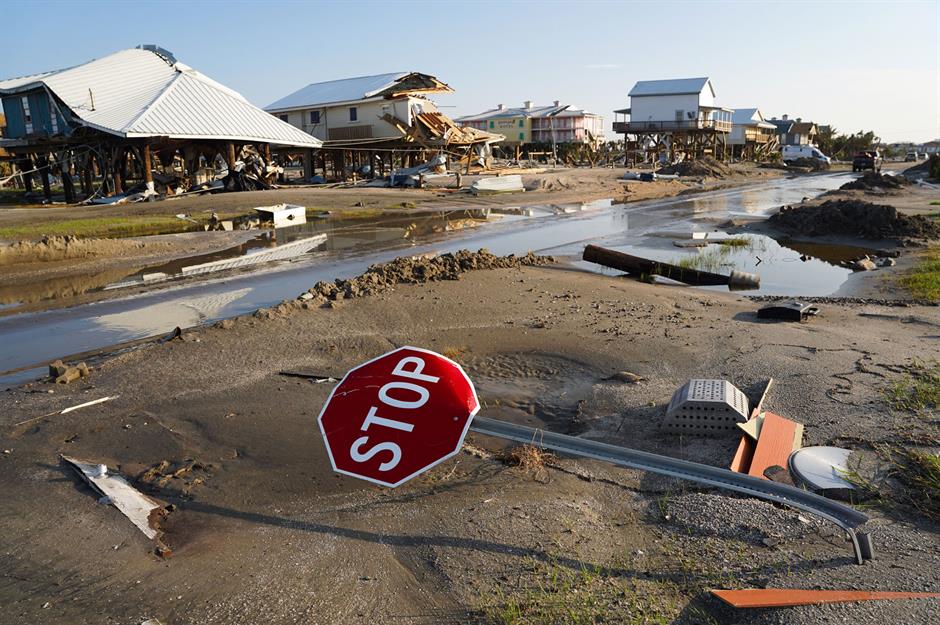
Given the lower fatality count, economic losses from early deaths fell to $3.9 billion (£3.1bn) in 2021. But the bill for physical damage climbed to $275.5 billion (£218bn).
Flooding in China affected the most people, with 14.5 million impacted, but Hurricane Ida, which wreaked havoc in the Caribbean and Southeastern US in August and September, was the costliest extreme weather event based on infrastructure damage alone. Adjusted for 2023 inflation, it led to losses of $73.1 billion (£57.9bn).
2022 – what happened?
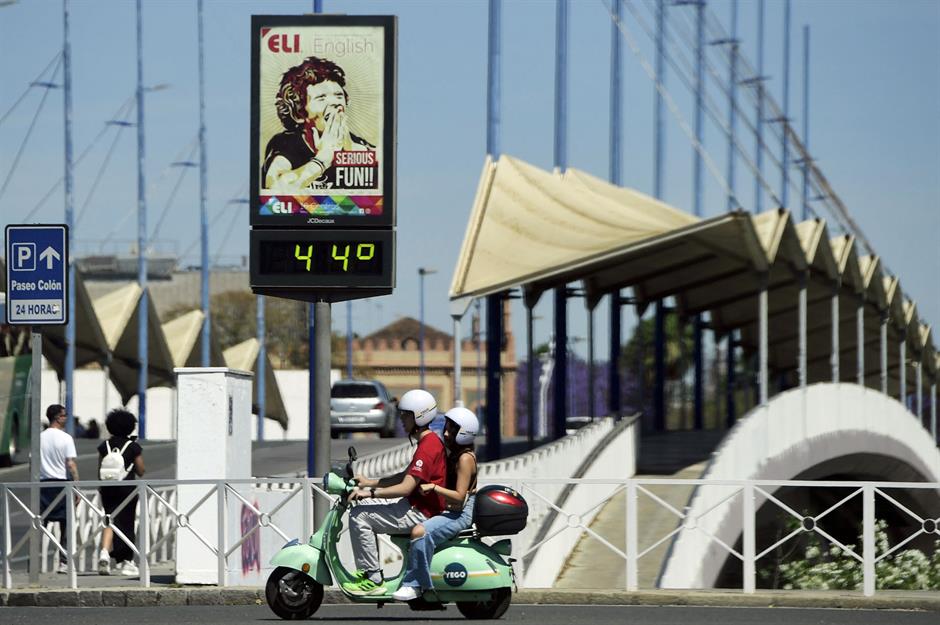
The effects of climate change became more pronounced in 2022 and the death toll from extreme weather events leapt to 74,000.
Heatwaves were the biggest killer. They claimed the lives of 16,305 people in Spain, Germany, the UK, France and Portugal according to the 2022 EM-DAT Report, but a subsequent study from Spain has put the fatality count over 70,000.
Flooding in Pakistan impacted the most people, with 33 million affected.
2022 extreme weather cost: $263.5 billion (£208.1bn)
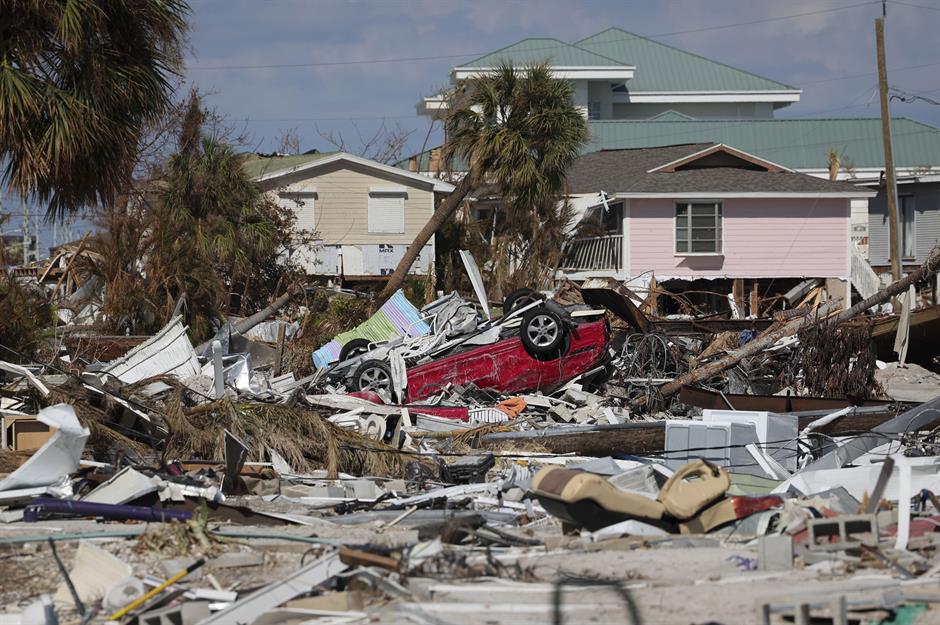
Costs associated with early deaths understandably mushroomed in 2022, rising to $42.5 billion (£33.6bn). The total for damage for the year comes to $275.5 billion (£217.9bn), a big increase from 2021.
Again, a hurricane was the principal cause. Ian, which barrelled into the Caribbean and Southeastern US in September and October, wrought $104 billion (£82.3bn) worth of damage.
2023 – what happened?
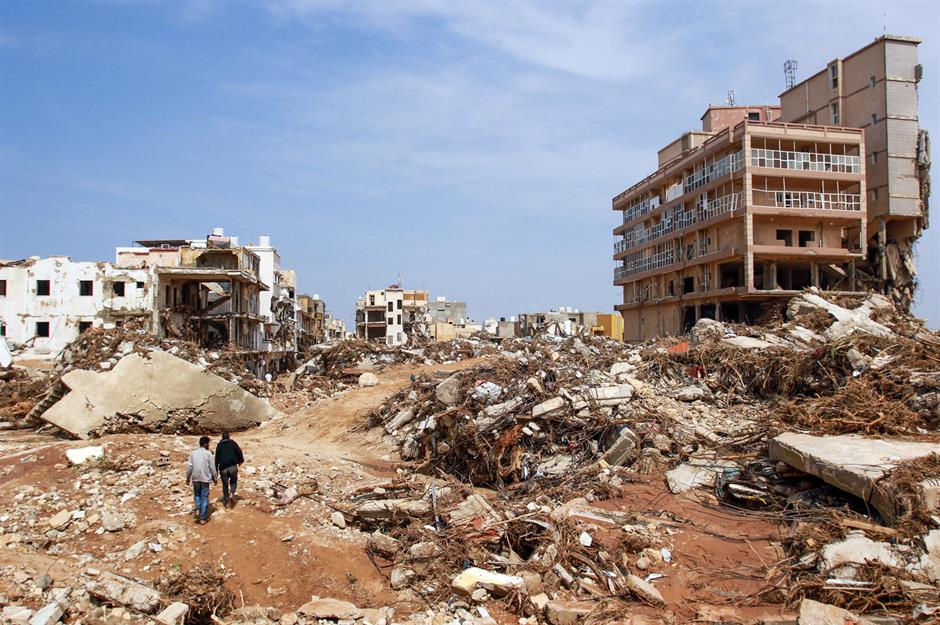
The extreme weather death count in 2023 remained very high, with 71,000 fatalities recorded. The figure could be considerably higher, though, since heatwave events in Europe are missing from the report due to incomplete data.
European heatwaves aside, the deadliest event was Storm Daniel. The powerful Mediterranean cyclone caused catastrophic dam failures in the Libyan city of Derna in September, killing thousands. The total death toll for the storm, which also affected Greece, Bulgaria and Turkey, stands at 12,352.
2023 extreme weather cost: $187.9 billion (£148.7bn)

The financial cost of the lives lost in 2023 amounts to $37.2 billion (£29.5bn), while the hit on global infrastructure was $150.7 billion (£119.3bn). Drought in Indonesia affected the most people –18.8 million in total. However, the most costly climate change-linked disaster, based on physical damage, was Typhoon Doksuri. The violent storm, which caused widespread flooding in Northeast China, racked up a bill of $25 billion (£19.8bn).
In total, the ICC estimates that extreme weather events over the past 10 years or so have cost a total of $2 trillion (£1.56tn) in damages
Now, let's discover the 10 most affected countries in terms of economic impact...
10. Brazil, 2014 to 2023 extreme weather cost: $24.8 billion (£19.6bn)

Extreme weather cost Brazil $24.8 billion (£19.6bn) between 2014 and 2023, making it the 10th most affected country economically.
Prone to hurricanes and other natural disasters, the French territory of Saint Martin in the Caribbean incurred the highest damages per capita at $158,886 (£125,541). Also in the West Indies, Dominica had the highest per capita cost among sovereign nations with a figure of $33,278 (£26,293).
9. France, 2014 to 2023 extreme weather cost: $29.4 billion (£23.3bn)

France was the ninth most impacted country over the past decade, with losses of $29.4 billion (£23.3bn).
From the Paris floods of 2016 to Storm Alex in 2020, France experienced more than its fair share of extreme weather events between 2014 and 2023. But the costliest came in the form of heatwaves, which are set to get much worse as global temperatures rise further.
8. Australia, 2014 to 2023 extreme weather cost: $33.7 billion (£26.3bn)
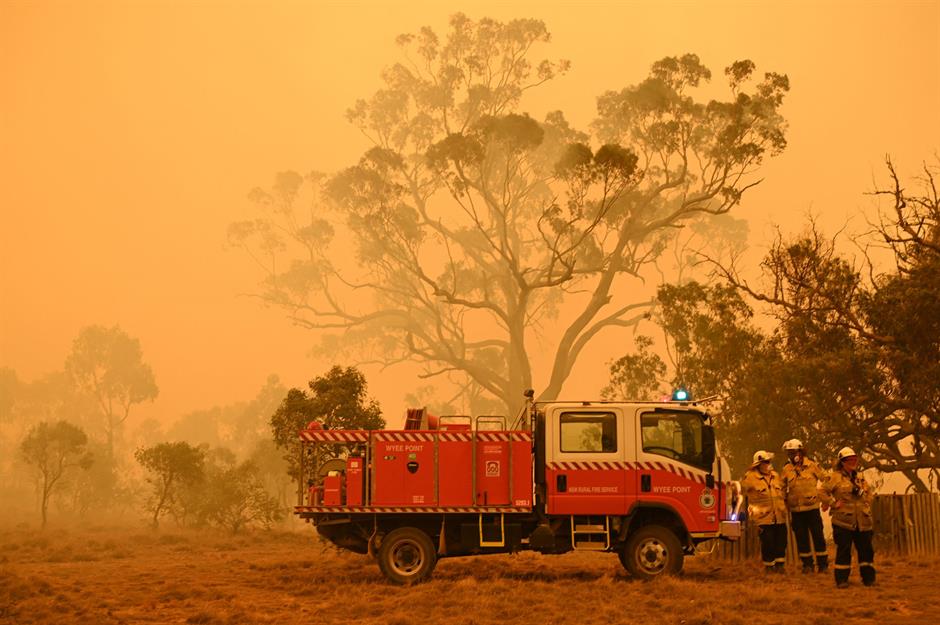
Australia had the eighth-largest bill for extreme weather-related events between 2014 and 2023, with a total cost of $33.7 billion (£26.3bn).
The nation has grappled with cyclones, floods, heatwaves and more. Australia's hellish bushfires have caused the highest death tolls and most economic damage in recent years. The infamous Black Summer infernos of 2019 and 2020 killed 32 people and 500 million animals and caused many billions of dollars worth of damage.
7. Italy, 2014 to 2023 extreme weather cost: $35 billion (£27.6bn)

Over the past decade, extreme weather cost Italy's economy $35 billion (£27.6bn).
The country is in the climate change firing line, contending with everything from avalanches and landslides to severe storms, flooding and prolonged heatwaves. Standout events over the past few years include the 2023 floods in the northern Emilia-Romagna region, the worst flooding Italy has seen for a century.
6. Germany, 2014 to 2023 extreme weather cost: $65.4 billion (£51.7bn)
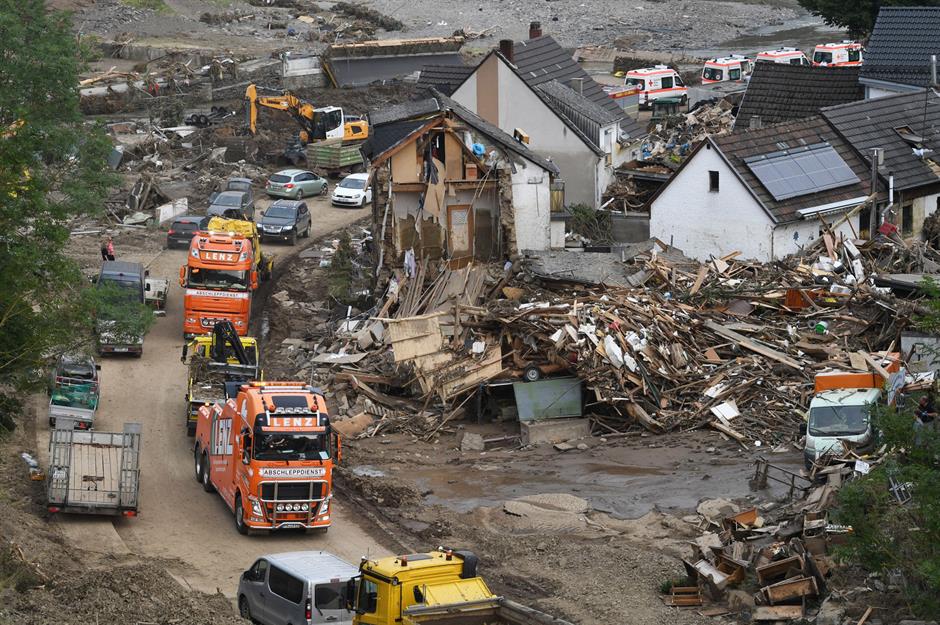
Flooding has also proved Germany's most challenging extreme weather nightmare – and its costliest.
The floods that struck Western Germany in July 2021, following the heaviest rain in 100 years, resulted in damage estimated at $40 billion (£31.6bn). It's little surprise then that the country's combined figure for between 2014 and 2023 of $65.4 billion (£51.7bn) is so high.
5. Puerto Rico, 2014 to 2023 extreme weather cost: $87.3 billion (£65.3bn)
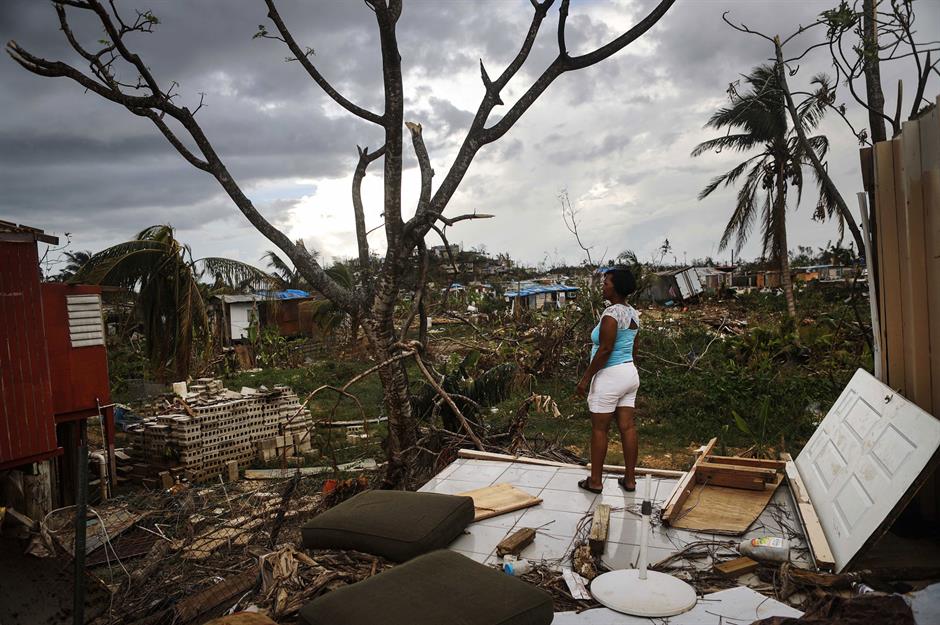
Though Puerto Rico is a US territory, EM-DAT treats it as a sovereign country, so Oxera has followed suit in its report.
The vast majority of Puerto Rico's eye-watering $87.3 billion (£65.3bn) extreme weather bill for the past decade can be attributed to Hurricane Maria, which tore through the Caribbean island in September 2017, leaving a trail of destruction and thousands of deaths in its wake.
4. Japan, 2014 to 2023 extreme weather cost: $90.8 billion (£71.7bn)
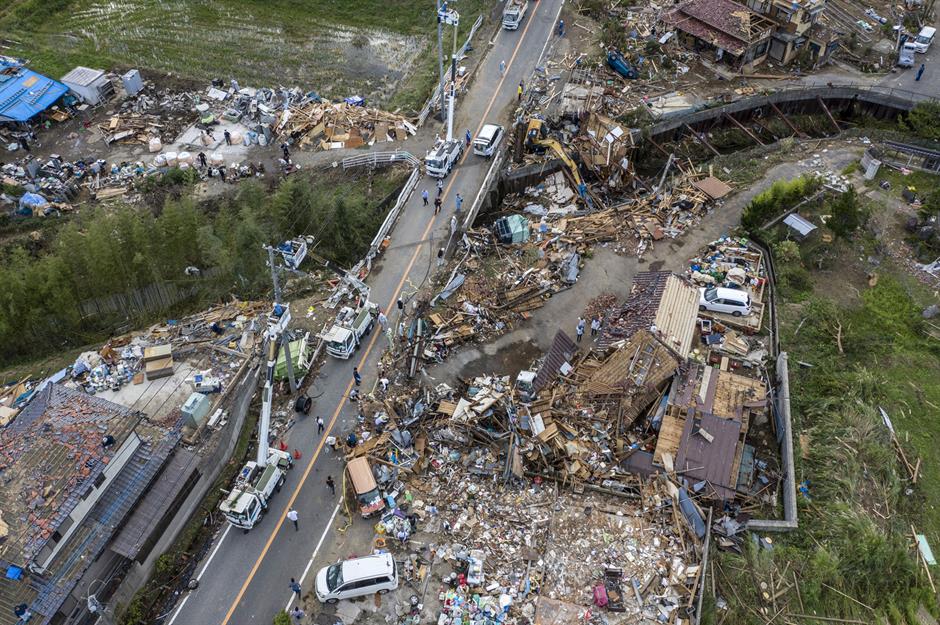
In addition to dealing with horrifying earthquakes and tsunamis, Japan endures many extreme weather events, including heatwaves and cyclones.
Needless to say, living with these meteorological threats is expensive, with total costs of $90.8 billion (£71.7bn) for the period between 2014 and 2023.
3. India, 2014 to 2023 extreme weather cost: $112.2 billion (£88.6bn)
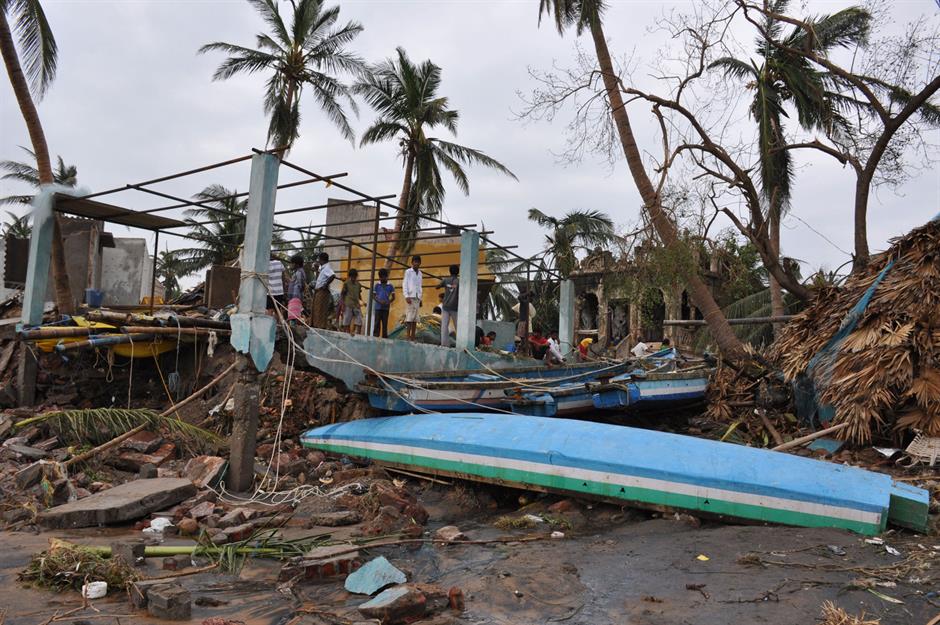
India was the third worst-affected nation financially over the past decade. Extreme weather cost the country $112.2 billion (£88.6bn) during this time.
Another natural disaster hotspot, India suffers frequent cyclones, heatwaves, droughts and flooding. Among the country's deadliest and costliest disasters over the last decade or so are the aforementioned Jammu and Kashmir floods in 2014 and Cyclone Ockhi in 2017.
2. China, 2014 to 2023 extreme weather cost: $267.9 billion (£211.4bn)
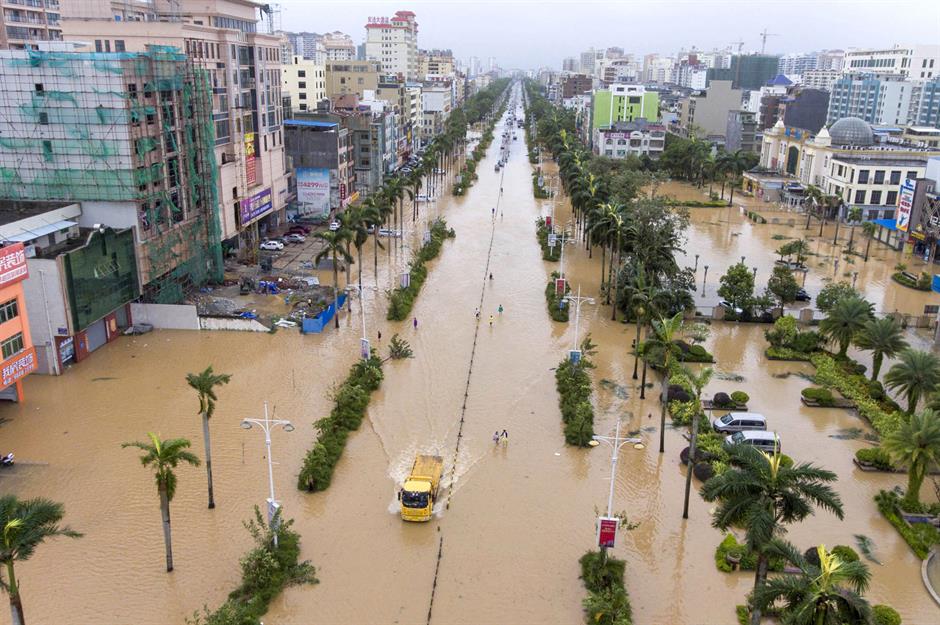
Extreme weather resulted in losses of $267.9 billion (£211.4bn) for China between 2014 and 2023.
Typhoon Doksuri, which struck in July 2023 and cost $25 billion (£19.8bn), is now the most expensive typhoon on record. China's costliest climate-linked disaster between 2014 and 2023, though, was the flooding that affected large parts of the country in 2016. As we've mentioned, it inflicted damages of $27.9 billion (£22bn) in 2023 money.
1. USA, 2014 to 2023 extreme weather cost: $934.7 billion (£737.7bn)
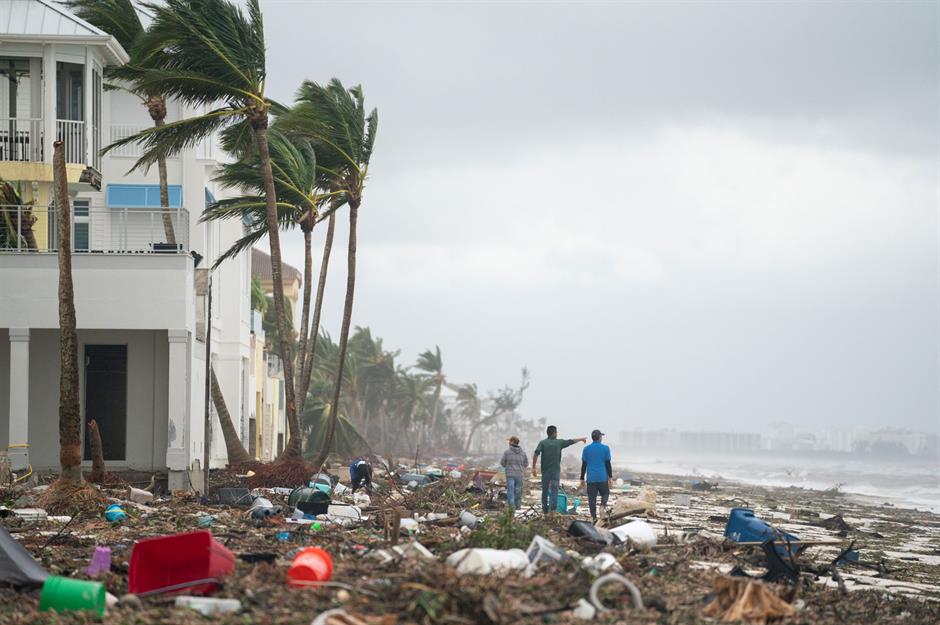
The US is a frequent target of Mother Nature's fury. Over the past decade, America incurred more financial fallout from extreme weather than any other country, surpassing a trillion dollars in losses if Puerto Rico is included.
Hurricanes are the nation's most expensive natural disasters. Of the top 10 costliest natural calamities in US history, eight spots are taken up by hurricanes, including five – Irma, Ida, Maria, Ian and Harvey – that occurred between 2014 and 2023. With storms set to get even more powerful as the planet warms further, the staggering financial cost is only set to increase.
Now discover which countries are using the most renewable energy
Comments
Be the first to comment
Do you want to comment on this article? You need to be signed in for this feature